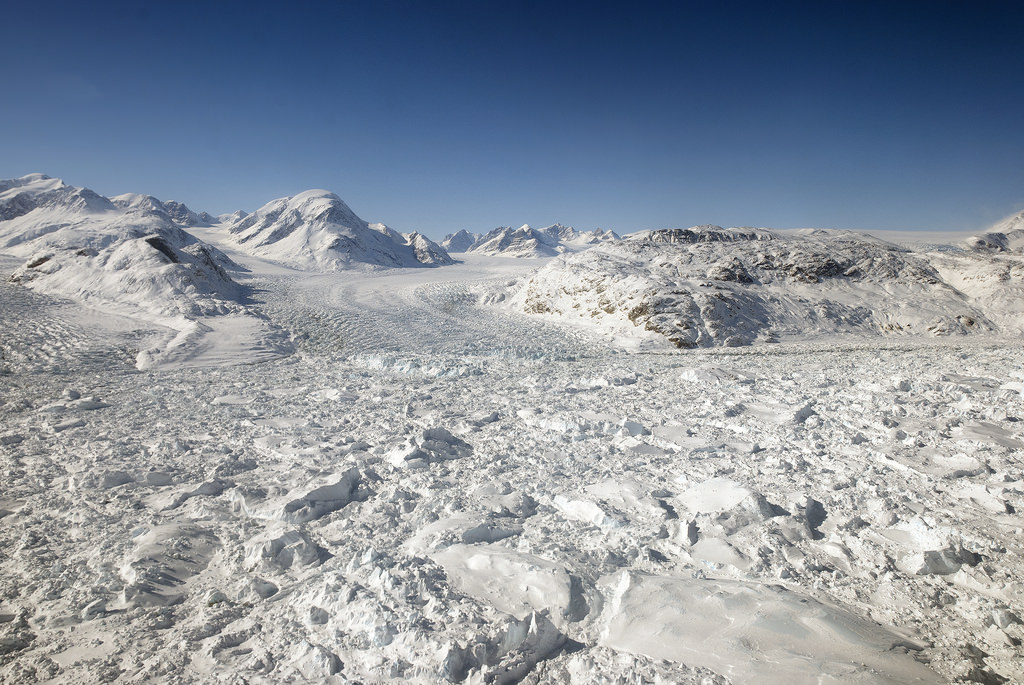Many regions on Earth are temperate, nutrient-rich, stable environments where life seems to thrive effortlessly. But not all of Earth. Some parts, like Greenland’s ice sheet, are inhospitable.
In our nascent search for life elsewhere in the Solar System, it stands to reason that we’ll be looking at worlds that are marginal and inhospitable. Icy worlds like Jupiter’s moon Europa and Saturn’s moon Enceladus are our most likely targets. These frozen worlds have warm oceans under layers of ice.
What can Greenland’s cryo-ecosystems tell us about searching for life on icy bodies like Europa and Enceladus?
Any organisms adapted to live on Greenland’s Ice Sheet (GrIS) have to be tough. It’s an extreme environment where life has to deal with prolonged exposure to sub-zero temperatures. Earth’s polar regions are also subjected to more radiation than other parts of Earth, due to the nature of the magnetosphere. According to some scientists, the GrIS can help us in our search for life on other worlds, where conditions are similarly extreme.
Laura Sánchez-García is a geoscientist at the Centro de Astrobiología in Madrid, Spain. Sanchez-Garcia visited a field site in Greenland in July 2021 to study microbial cryo-ecosystems. The GrIS is kind of like a laboratory for studying these systems, and according to Sanchez-Garcia, the ice sheet may have implications in our search for life on Europa, Enceladus, and other icy worlds.

It’s not just the GrIS itself that’s attracted all this attention. There are also glacial lakes, peat bogs, melting streams, and permafrost. Taken together, all of these environments could host microbial environments that represent different stages of evolution for psychrophilic microorganisms.
Sanchez-Garcia’s efforts focused on what are called lipid biomarkers. They’re specific organic molecules that can be traced back to their source organisms. Lipids include fats and waxes, and they can be fossilized and preserved in sedimentary rocks and in ice through geological time frames, unlike other markers like DNA and proteins. Breakthroughs in genomics and bioinformatics have advanced the study of lipid biomarkers, and have helped grow our understanding of the history of microbial life on Earth. Those same breakthroughs are helping shape our search for life on other worlds in our Solar System.
Sanchez-Garcia and her colleague, Daniel Carrizo, retrieved ice core samples from different locations on and around the GrIS. They sampled a combination of older ice, younger ice, and cleaner and dirtier ice from depths between 50 to 80 cm (20 to 31 in). They also took meltwater samples and sediment samples from bedrock erosion, and water samples from a variety of different types of lakes, including a salt lake. All of the samples were filtered and analyzed. Water samples were analyzed chemically, while sediment and ice samples were analyzed for lipid biomarkers.

Finally, the team gathered samples from mosses, grasses, lichens, and other plants. This allowed them to “…get a glimpse of the fresh isotopic signatures from the vegetation contributing to the soil lipidic fingerprint…” according to the team. What’s next?

Sanchez-Garcia and Carrizo are back in the lab with their samples and intend to publish their results. The pair of researchers are focusing on three topics:
- Detection of psychrophilic sources and metabolisms in the Greenlandic glacier Issunguata Sermia.
- Molecular and isotopic distribution of lipid biomarkers in glacial versus rainwater lakes of the Greenlandic region of Kangerlussuaq.
- Biological succession on Greenlandic soils after glacier retreat based on molecular and isotopic lipid biomarkers.
The results of studies like this are important not only in understanding Earth’s history but also in astrobiology. The data helps build models of how chemistry, biology, and geology all interact. It gives scientists a better understanding of Earth’s carbon cycle, and how oxygen built up in the atmosphere, an event that was critical for the development of complex organisms.
Insights into the development of life on Earth aid in the search for life on other worlds. This research into extremophiles on Earth helps develop mission profiles for places like Enceladus and Europa. Successful missions rely on asking the right questions at the right time with the right technology. Research like this helps refine the questions.

Astrobiologists are pretty sure that for life to arise water must be in contact with rocks. On both Enceladus and Europa, scientists believe that rocks and briny water are in contact, with ice being another significant feature. The Greenland Ice Sheet gives researchers like Sanchez-Garcia an opportunity to refine our understanding of how it all plays out.
One of the overarching goals in astrobiology is to understand how Earth itself became habitable. How, when, and why did it become habitable? If other worlds in our Solar System are habitable, how can we know?
One big, final answer to those questions is unlikely. Instead, a series of smaller answers is more likely. Maybe this research at the Greenland Ice Sheet will provide some.
More:
- Press Release: Investigating molecular and isotopic fingerprints of life on Greenland Ice Sheet (GrIS) cryo-ecosystems with astrobiological interest for icy worlds.
- ESA Video: Meet the Experts: Extreme life
- Universe Today: Nutrient-Poor and Energy-Starved. How Life Might Survive at the Extremes in the Solar System

